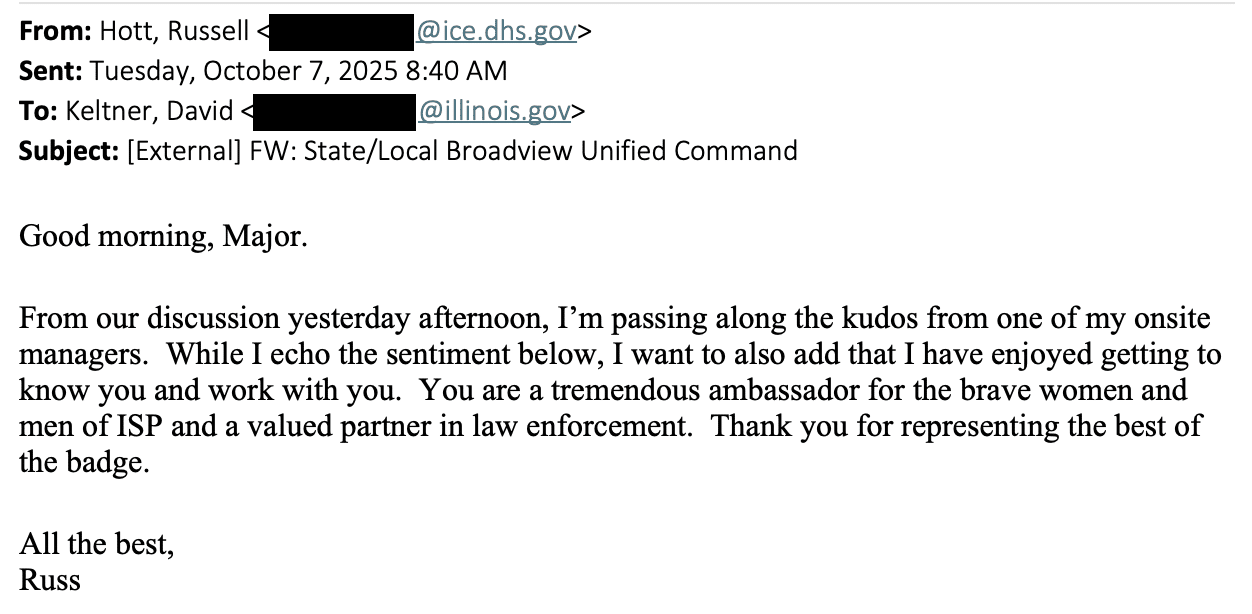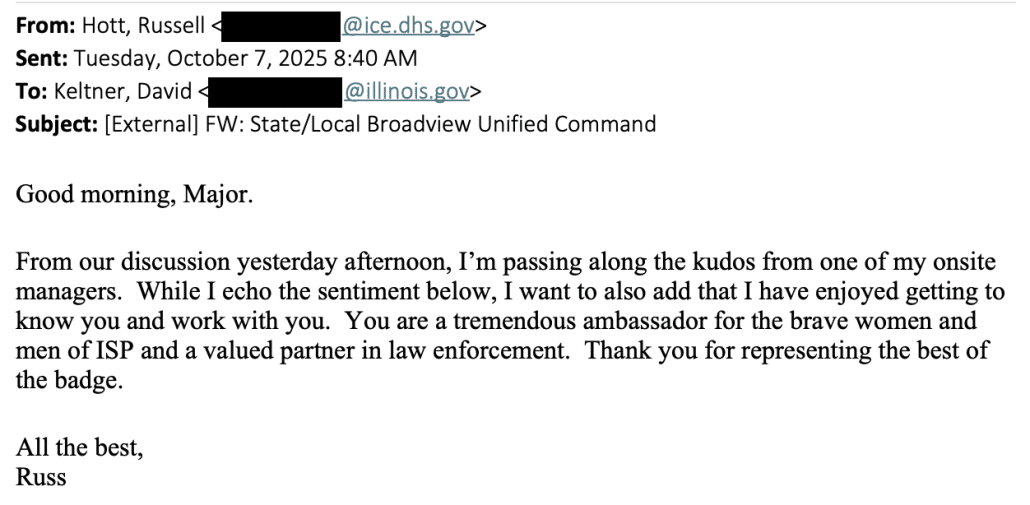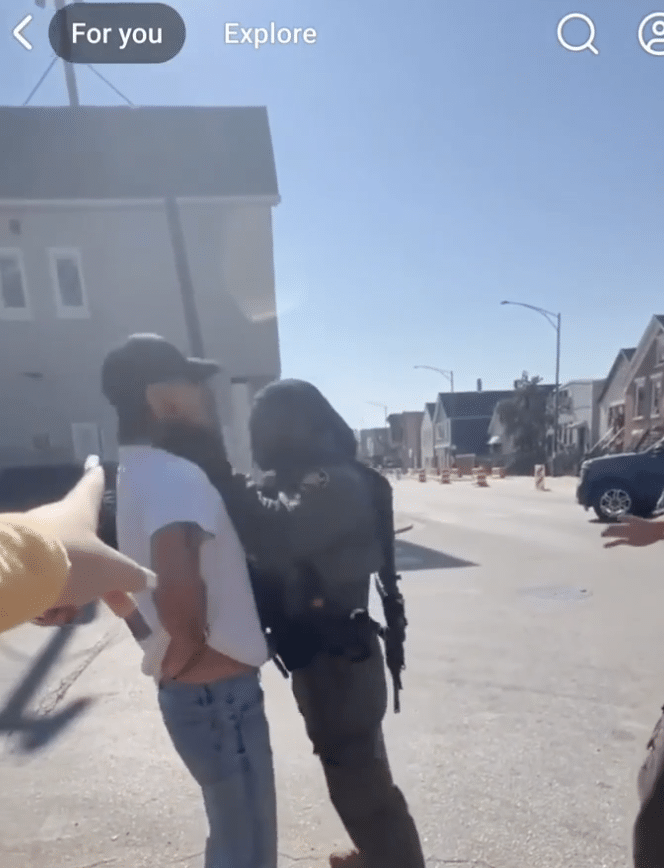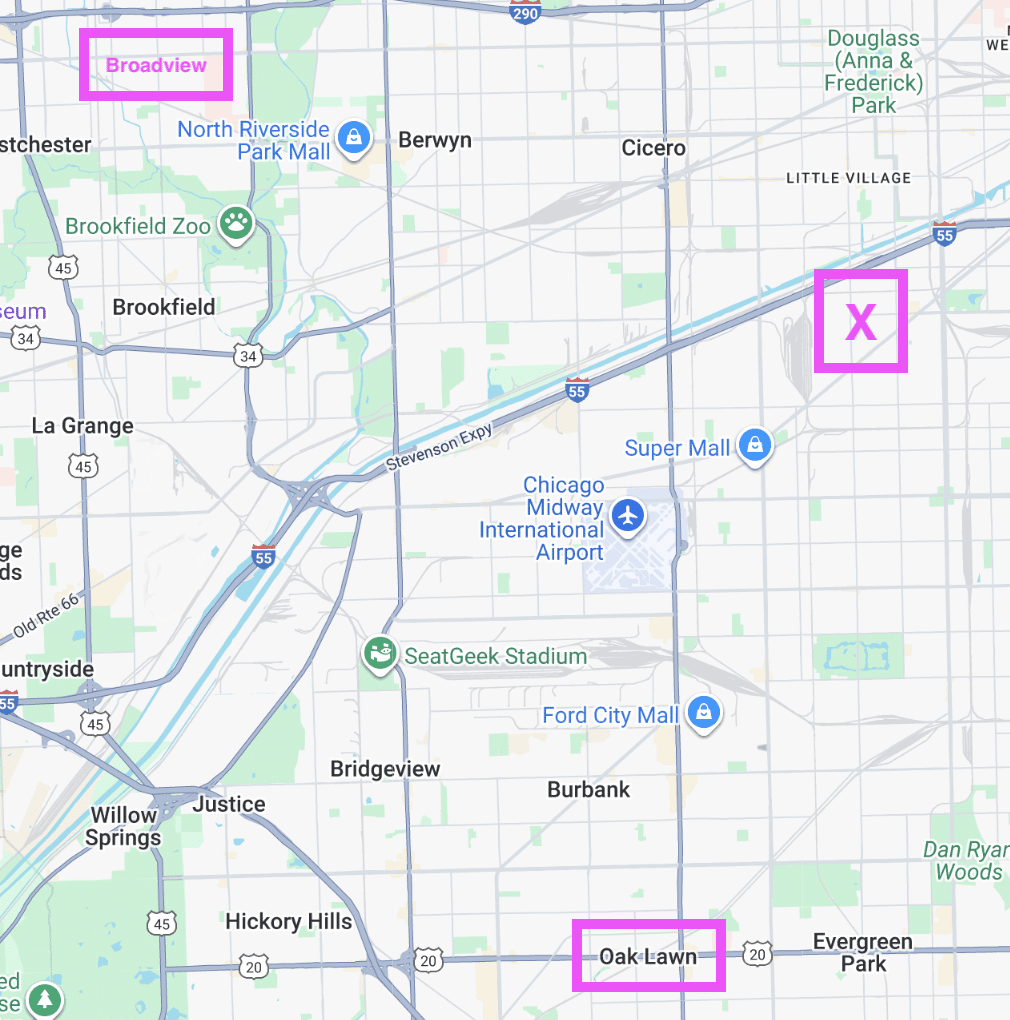How City of Chicago Beat Back Stephen Miller’s Shoddy Propaganda … So Far
No one has confessed they were wrong that JB Pritzker’s late August messaging was enough to stave off an invasion.
Shortly after Pritzker had that press conference on August 27, Trump announced he was going to invade New Orleans instead of Chicago, implying that he wanted to be invited to invade.
President Donald Trump said on Wednesday that he may deploy federal troops to New Orleans next, not Chicago, and is waiting for governors to ask for help — a shift in his rhetoric about moving into major U.S. cities uninvited.
“We are making a determination now: Do we go to Chicago? Or do we go to a place like New Orleans where we have a great governor, Jeff Landry, who wants us to come in and straighten out a very nice section of this country that has become quite – quite tough, quite bad?” Trump said during an Oval Office meeting alongside Poland’s new president.
“You have New Orleans, which has a crime problem. We’ll straighten that out in two weeks, easier than D.C.,” Trump said.
That was a walk-back of his declaration just 24 hours earlier that “we’re going in” to Chicago, a city he has long maligned for violent crime but has a Democratic governor who opposes Trump’s deployment of federal troops in his state.
That led to a wave of wishcasting that Pritzker’s strong words (particularly as compared to what Gavin Newsom had done) were enough to stave off invasion.
They weren’t.
The details in Illinois’ lawsuit that has, thus far, at least, halted the invasion by the National Guard, reveal that even as lefties were celebrating the effect of Pritzker’s firey rhetoric, ICE was laying the groundwork to create the excuse to send in troops.
On September 2, 2025—as President Trump was repeatedly threatening a troop deployment in Chicago—ICE’s Chicago Field Director Russell Hott and Assistant Field Director Jimmy Bahena met with Broadview’s Chief of Police, Thomas Mills.76 In that meeting, Director Hott informed Chief Mills and his staff that, beginning the next day, a large number of federal agents, including approximately 250 to 300 CBP agents, would begin arriving in Illinois to assist with a ramped-up immigration enforcement campaign in the Chicagoland area.77 Director Hott stated their goal was to make large numbers of immigration-related arrests and stated that the ICE facility in Broadview would be the primary processing location for the operation.78 Director Hott stated that the facility would operate continuously, seven days per week for approximately 45 continuous days.79
Director Hott also informed Chief Mills that ICE officials expected numerous protests, including potential property damage and assaults against law enforcement personnel, similar to what had occurred in Los Angeles earlier in the year. 80 ICE officials also expected there to be impacts on traffic and businesses in the immediate vicinity of ICE’s detention center, located at 1930 Beach Street in Broadview. 81 [my emphasis]
Broadview Police Chief Thomas Mills described in a declaration how the arrival of agents in tactical gear changed the tone of the crowd.
21. At around 10:00 a.m. that morning, 20-30 federal agents parked their vehicles in the parking lot on the opposite side of Beach Street and began to walk across the street toward the ICE facility. The agents were dressed in camouflage tactical gear and had masks covering their faces. September 12 was the first day that I recall seeing federal agents on scene dressed in that manner. It was a very noticeable shift in my mind.
22. As agents approached the ICE facility that day, September 12, the tone of the crowd of protestors changed. The crowd grew louder and began to press closer to the building. Broadview Police officers positioned ourselves on the public way, between the 1930 Beach Street building and the crowd, attempting to keep the crowd on the public way and off of ICE’s property. When the federal agents went into the building, the crowd calmed down, and Broadview Police officers relocated to the outer perimeter of the crowd.
For 44 days and counting, Stephen Miller’s goons have been trying to create a pretext to federalize law enforcement in Chicago.
Along the way, they’ve engaged in a whole bunch of propaganda: making false claims of assault to explain away ICE assaults, setting up dramatized attacks on an entire apartment building, deliberately creating “shitshows” that result in arrests that almost all get dismissed.
And at least thus far, it has not worked.
When Judge Amy Perry ruled against the National Guard deployment last week, she found that all three government affiants claiming there was unrest in Chicago that justified an invasion lacked credibility.
The Court therefore must make a credibility assessment as to which version of the facts should be believed. While the Court does not doubt that there have been acts of vandalism, civil disobedience, and even assaults on federal agents, the Court cannot conclude that Defendants’ declarations are reliable. Two of Defendants’ declarations refer to arrests made on September 27, 2025 of individuals who were carrying weapons and assaulting federal agents. See Doc. 62-2 at 19; Doc. 62-4 at 5. But neither declaration discloses that federal grand juries have refused to return an indictment against at least three of those individuals, which equates to a finding of a lack of probable cause that any crime occurred. See United States v. Ray Collins and Jocelyne Robledo, 25-cr-608, Doc. 26 (N.D. Ill. Oct. 7, 2025); United States v. Paul Ivery, 25-cr-609 (N.D. Ill.). In addition to demonstrating a potential lack of candor by these affiants, it also calls into question their ability to accurately assess the facts. Similar declarations were provided by these same individuals in Chicago Headline Club et. al. v. Noem, 25-cv-12173, Doc. 35-1, Doc. 35-9 (N.D. Ill.), a case which challenged the Constitutionality of ICE’s response to protestors at the Broadview ICE Processing Center. In issuing its TRO against DHS Secretary Kristi Noem, the court in that case found that the plaintiffs would likely be able to show that ICE’s actions have violated protestors’ First Amendment right to be free from retaliation while engaged in newsgathering, religious exercise, and protest, and Fourth Amendment rights to be free from excessive force. Id. at Doc. 43. Although this Court was not asked to make any such finding, it does note a troubling trend of Defendants’ declarants equating protests with riots and a lack of appreciation for the wide spectrum that exists between citizens who are observing, questioning, and criticizing their government, and those who are obstructing, assaulting, or doing violence.5 This indicates to the Court both bias and lack of objectivity. The lens through which we view the world changes our perception of the events around us. Law enforcement officers who go into an event expecting “a shitshow” are much more likely to experience one than those who go into the event prepared to de-escalate it. Ultimately, this Court must conclude that Defendants’ declarants’ perceptions are not reliable.6
Finally, the Court notes its concern about a third declaration submitted by Defendants, in which the declarant asserted that the FPS “requested federalized National Guard personnel to support protection of the Federal District Court on Friday, October 10, 2025.” Doc. 62-3. This purported fact was incendiary and seized upon by both parties at oral argument. It was also inaccurate, as the Court noted on the record. To their credit, Defendants have since submitted a corrected declaration, and the affiant has declared that they did not make the error willfully. Doc. 65-1. All of the parties have been moving quickly to compile factual records and legal arguments, and mistakes in such a context are inevitable. That said, Defendants only presented declarations from three affiants with first-hand knowledge of events in Illinois. And, as described above, all three contain unreliable information. [Links added]
One of the most persuasive things Illinois was able to do was to show that at the same time that ERO Field Director Russ Hott was submitting a sworn declaration claiming all manner of horribles, he was sending email saying something totally different to the local cops saying something totally different.
It’s not clear, in this day and age, whether definitively proving that Stephen Miller and Kristi Noem and Greg Bovino and Tricia McLaughlin are just making shit up will be enough. Certainly, the right wingers on SCOTUS have proven just as susceptible to the Fox News propaganda bubble as Trump himself.
But thus far, at least, truth has won out over fabrications.
Update: The 7th Circuit just declined to disrupt Judge Perry’s retraining order. The panel — which included Trump appointee Amy St. Eve — cited Perry’s credibility ruling this way:
After holding a hearing and assessing the preliminary record, the court granted in part plaintiffs’ request for a temporary restraining order and enjoined the federalization and deployment of the National Guard for 14 days. The court withheld judgment on a preliminary injunction and did not extend its order to non–National Guard military forces or the President himself. The district court recognized the substantial deference due a President’s assessment of whether § 12406(2) or (3)’s factual predicates are satisfied, but it concluded nonetheless that, under its factual findings, the statutory requirements were not met. Where the declarations of the administration conflicted with the declarations of state and local law enforcement concerning conditions on the ground, the court made a credibility determination in plaintiffs’ favor. In particular, the court found that all three of the federal government’s declarations from those with firsthand knowledge were unreliable to the extent they omitted material information or were undermined by independent, objective evidence.
[snip]
Even giving great deference to the administration’s determinations, the district court’s contrary factual findings— which, at this expedited phase of the case, are necessarily preliminary and tentative—are not clearly erroneous. The submitted evidence consists almost entirely of two sets of competing declarations describing the events in Broadview. The district court provided substantial and specific reasons for crediting the plaintiffs’ declarations over the administration’s, and the record includes ample support for that decision. Given the record support, the findings are not clearly erroneous. See United States v. Nichols, 847 F.3d 851, 857 (7th Cir. 2017) (explaining that “where the district court’s factual findings are supported by the record, we will not disturb them” under clear-error review).
The opinion was more important for the way it defined rebellion (in part, because the same ruling will be the starting point for discussions of insurrection).
Although we substantially agree with the definition of rebellion set forth by the district court in Newsom, we emphasize that the critical analysis of a “rebellion” centers on the nature of the resistance to governmental authority. Political opposition is not rebellion. A protest does not become a rebellion merely because the protestors advocate for myriad legal or policy changes, are well organized, call for significant changes to the structure of the U.S. government, use civil disobedience as a form of protest, or exercise their Second Amendment right to carry firearms as the law currently allows. Nor does a protest become a rebellion merely because of sporadic and isolated incidents of unlawful activity or even violence committed by rogue participants in the protest. Such conduct exceeds the scope of the First Amendment, of course, and law enforcement has apprehended the perpetrators accordingly. But because rebellions at least use deliberate, organized violence to resist governmental authority, the problematic incidents in this record clearly fall within the considerable daylight between protected speech and rebellion.
Applying our tentative understanding of “rebellion” to the district court’s factual findings, and even after affording great deference to the President’s evaluation of the circumstances, we see insufficient evidence of a rebellion or danger of rebellion in Illinois. The spirited, sustained, and occasionally violent actions of demonstrators in protest of the federal government’s immigration policies and actions, without more, does not give rise to a danger of rebellion against the government’s authority. The administration thus has not demonstrated that it is likely to succeed on this issue.
The panel allowed Trump to keep Guard deployed, sitting in Illinois doing nothing. But they cannot patrol the streets.
Update: Trump has appealed to SCOTUS. Amy Coney Barrett has ordered Illinois to respond by Monday evening, but did not immediately overturn the stay.






